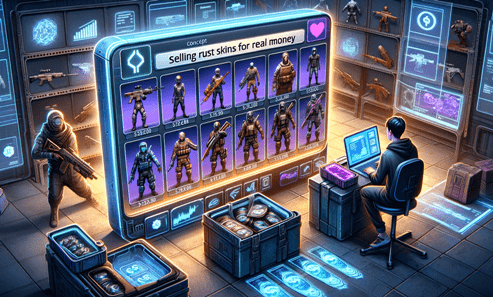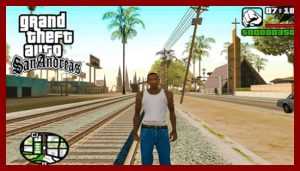Can I Sell My Rust Skins for Real Money?
Survival enthusiasts and virtual architects, gather around as we delve into a world of gritty landscapes and precarious encounters – the world of Rust. But there’s more to Rust than just outlasting others and maintaining your digital heartbeat. A whole economy bubbles under the surface of this survivalist’s paradise, where the artistic flourishes on your guns and gear – yes, we’re talking about Rust skins – can be worth more than just a few envious glances.

What Exactly Are Rust Skins?
Before delving into the bustling market of skin sales, let’s understand what Rust skins are. They’re essentially cosmetic enhancements in the game Rust, brought to life by Facepunch Studios. These skins can be draped over your items, delivering no competitive advantage but potentially turning your virtual wardrobe into a miner’s canary for your style. And guess what – they’re tradable.
Earning Your Rust Skins
When you first catapult into the bizarre landscapes of Rust, you’re greeted with the humblest line-up of skins. As expected, they’re the commoners in the realm of skins – widespread and mundane. However, for the discerning eye and the covetous heart, there are paths to be carved. Be it through the clout of Twitch streamers via drops, completing arduous surveys, or simply by unleashing the power of the purse on platforms like Steam or Skinomat.com – the choice is yours.
Trading Rust Skins: A Digital Marketplace
The Steam Community Market stands as the most official thoroughfare for trading Rust skins. It’s secure, convenient, and sanctioned by the game’s developers. But there’s a hitch – this marketplace is a closed-loop. The currency you earn from sales isn’t withdrawable as cold hard cash; it’s destined to circulate within the membrane of Steam’s ecosystem.
Burgeoning Beyond Steam’s Boundaries
Enter third-party marketplaces like Skinomat.com or skincashier.com, which court those looking to convert virtual treasures into tangible currency. With just a few clicks, you can sign in, rummage through your inventory, and place your digital goods on the altar of commerce, pricing them to dance to the tune of supply and demand.
Freebies and Crafting Your Masterpieces
If you’re not keen on parting with real money or want to venture beyond the artifacts provided at inception, there’s hope. Keep an ear to the ground for Rust streamers issuing skins like divine decrees through Twitch drops, or play the game and let luck bestow skins upon you. For the creatives with a burning vision, Rust’s workshop provides a canvas to etch out your original creations for the world – or at least the marketplace – to behold.
The Pinnacle of Rust Vanity: The Most Coveted Skins
The Rust skin economy is mercurial, with tastes as unpredictable as the game’s raiders. The pièce de résistance among skins ebbs and flows, but if whispers are to be believed, a Tempered Mask sits regally atop the valuation throne – but only accessible through the aforementioned monetary avenues.
My Two Cents on Selling Rust Skins for Real Money
So here we are, standing on the precipice of the question that started this journey: Can you, a digital nomad of Rust, convert your skins into actual currency to pad your wallet in the non-virtual world? The answer is a resonant yes, but it comes adorned with caveats. The most official of platforms, Steam, doesn’t directly allow for cash-outs, but external marketplaces are happy to oblige, provided you navigate them with the due diligence befitting a Rust survivor.
Bear in mind that the value of these skins is as volatile as the game’s alliances. Cash out too soon, and you might miss a spike; too late, and the bubble could burst. The allure of cashing in on your digital assets is unmistakably sweet, but like all trades in the world of Rust, it’s best approached with a mix of caution, strategy, and a smidgen of audacity. Whether trading skins on Steam for an endless cycle of in-platform purchases or cashing out on third-party sites for a real-world treasure trove, the choice is yours. Make it wisely, sell boldly, and play on, survivors.











